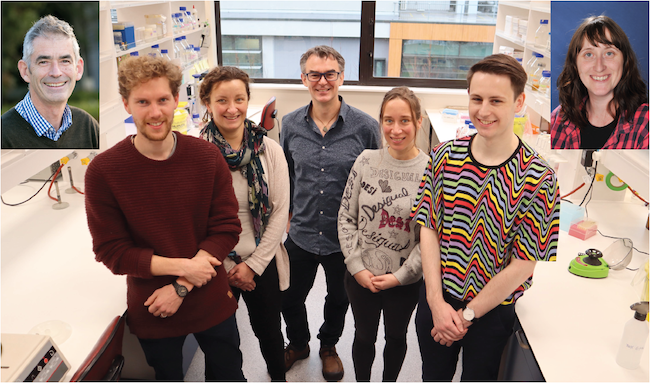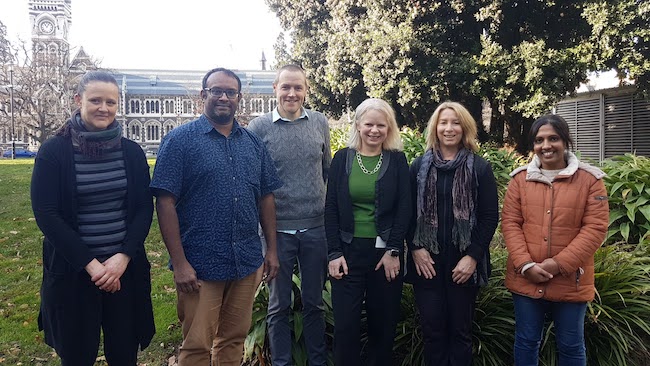Two research proposals from the Biochemistry Department have made it through the highly competitive NZHRC project funding application round this year.
Both projects aim to help improve cancer treatments using knowledge of biomolecules, but each uses a different approach. One uses the ability to catalogue the thousands of RNA molecules present in a single cell, and the other looks at just a few protein molecules, but in intricate detail.
Each project will receive $1,200,000 for 36 months, will employ several highly skilled scientists, and together will help kick-start the research careers of many students.
Professor Catherine Day, a structural biologist, leads one of the projects. She is collaborating with Associate Professor Peter Mace, also in the Department of Biochemistry, and Professor Julia Horsfield of the Department of Pathology.
“We're really pleased – the funding provides strong support and opportunities for the careers of the scientists who work with us,” says Professor Day. “It has also opened up a new collaboration with the Horsfield Lab, which we are very excited about.”
The other project is led by distinguished cancer researcher Professor Parry Guilford, who will work closely with bioinformatics expert Professor Mik Black, also of the Department of Biochemistry.
Project 1: A single-cell transcriptomic approach to gastric cancer heterogeneity

The team working on Professor Guilford's HRC research project. From left: Conor Vaessen, Tanis Godwin, Professor Mik Black, Dr Lily D'courtye-Espiard, and Kieran Redpath. Inset from left: Professor Parry Guilford and Dr Nicola Bougen-Zhukov.
Professor Guilford's team aims to find better ways of treating stomach cancer using a technology called single-cell RNA sequencing.
Their research pivots on the fact that cells in a single tumour are not all genetically identical. The cells are actually a mosaic, a collection of populations of cells each with a different pattern of RNA molecules, or gene expression.
Cells with different expression patterns will respond differently to a cancer drug treatment.
This means that when you treat a cancer with a particular drug, some of the cells in a tumour will be killed by the drug, and the tumour might shrink for a while, but other cells won't, eventually taking over and growing the tumour again.
The new technology is now at a point where we can use it figure out the different expression patterns in all of the different types of cells that make up a single tumour.
The team will use this technology to track down drugs that can stop the growth of all of the cancer cell populations in a tumour, not just one at a time.
The first application of this single cell approach to cancer drug identification will be to identify drugs for the chemoprevention of the cancer syndrome Hereditary Diffuse Gastric Cancer.
Project 2: WNT signalling

The team working on Professor Day's HRC research project. From left, Dr Claudia Rossig, Dr Prasanth Padala, Associate Professor Peter Mace, Professor Catherine Day, Professor Julia Horsfield, and Dr Jisha Antony.
Professor Day's team aims to reveal the details of how some cancers can arise in the first place.
In healthy humans, there are networks of molecules that have a tight control over the numbers and types of cells that grow in each part of our bodies. We want some types of cells to multiply when we are children, so that we grow and develop properly, but we don't want them to keep growing when we are adults.
When these networks fail, cells multiply when they shouldn't, leading to cancer.
Professor Day's team is looking at one of these network of molecules, called the WNT signalling pathway.
They will focus on two protein molecules involved in WNT signalling, ZNRF3 and RNF43, teasing out the exact atomic details of how they work and, in particular, how they are regulated (turned off and on).
This knowledge will show the researchers ways to change how the pathway works, thereby providing them with new targets to develop new drugs.